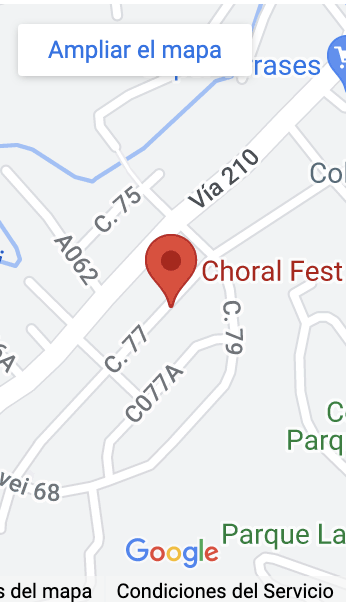Securing Sponsorship and Grants for Your Choir
In a world where arts and culture face financial challenges, choirs often struggle to find the necessary funding to sustain and grow their programs. Whether you’re a community choir, a school group, or a professional ensemble, securing sponsorship and grants can provide the financial support needed to achieve your musical aspirations. In this guide, we’ll explore strategies to help your choir successfully obtain sponsorships and grants.
Understanding the Importance of Funding for Choirs
Choirs play a vital role in enriching communities, providing cultural experiences, and offering personal growth opportunities for participants. However, the costs associated with running a choir can be significant. These expenses include venue rentals, sheet music, uniforms, marketing, and travel for performances. According to a 2021 survey by Chorus America, the average budget for a community choir can range from $5,000 to over $100,000 annually, depending on size and scope.
Securing sponsorship and grants can alleviate these financial burdens and enable choirs to focus on their artistic mission. By tapping into external funding sources, choirs can expand their outreach, enhance their performances, and provide scholarships for members in need.
Crafting a Compelling Proposal
One of the most crucial steps in securing sponsorship and grants is crafting a compelling proposal. This document serves as your choir’s introduction to potential funders and should communicate your choir’s mission, objectives, and needs clearly.
Define Your Choir’s Mission and Goals
Start by clearly defining your choir’s mission and goals. What makes your choir unique? What are your short-term and long-term objectives? Use concrete examples to illustrate your choir’s impact on the community. For instance, «Our choir aims to bring diverse musical experiences to underserved communities by hosting free concerts and workshops.»
Identify Your Funding Needs
Be specific about what you’re seeking funding for. Break down your budget into categories such as venue costs, music purchases, and marketing expenses. Providing a detailed budget demonstrates transparency and helps potential sponsors understand where their contributions will be utilized.
Highlight Past Successes
Showcase your choir’s achievements to build credibility. Include statistics, testimonials, and media coverage if available. For example, «Our choir has performed for over 5,000 audience members in the past year and received positive reviews in the local press.»
Researching Potential Sponsors and Grant Providers
Identifying potential sponsors and grant providers is a critical step in the funding process. Focus on organizations and companies whose values align with your choir’s mission.
Local Businesses and Community Organizations
Local businesses and community organizations often support arts and culture initiatives. Research companies in your area that might be interested in sponsoring your choir. Consider creating partnerships with community organizations that share your choir’s goals.
Arts Foundations and Grant Providers
Numerous foundations and grant providers focus on supporting the arts. Websites like GrantWatch and Foundation Directory Online can help you find potential funders. Look for grants specifically aimed at choirs, music education, or cultural enrichment programs.
Building Relationships with Potential Sponsors
Building strong relationships with potential sponsors is crucial for securing long-term support. Consider the following strategies:
Networking and Community Engagement
Attend local events, workshops, and networking opportunities to connect with potential sponsors. Engage with your community by hosting events or volunteering. This increases your choir’s visibility and helps establish relationships with key stakeholders.
Personalized Outreach
When reaching out to potential sponsors, personalize your communication. Highlight how their support can make a difference and align with their corporate social responsibility goals. For instance, «By supporting our choir, your company will help provide musical education to underserved youth in our community.»
Writing a Winning Grant Application
Grant applications can be competitive, but following these tips can increase your chances of success:
Follow Guidelines Carefully
Each grant provider has specific guidelines and requirements. Ensure you read and follow these instructions carefully to avoid disqualification. Pay attention to deadlines and submit your application on time.
Tell a Compelling Story
Use storytelling to make your application stand out. Share personal anecdotes, success stories, and testimonials that demonstrate the impact of your choir. For example, «Through our choir’s outreach program, we have inspired over 100 students to pursue music education and improved their academic performance.»
Include Measurable Outcomes
Grant providers want to see tangible results from their funding. Include measurable outcomes in your application, such as audience numbers, community engagement metrics, or educational achievements. This demonstrates accountability and the potential for a positive impact.
Leveraging Sponsorship Benefits
Once you’ve secured sponsorship, it’s essential to provide value to your sponsors. Consider offering the following benefits:
Brand Visibility
Promote your sponsors through your choir’s marketing materials, website, and social media platforms. Highlight their support during performances and events, giving them recognition in front of your audience.
Exclusive Access and Opportunities
Offer sponsors exclusive access to concerts, rehearsals, or behind-the-scenes events. Consider hosting networking opportunities where sponsors can engage with other community leaders and supporters of the arts.
Conclusion: Sustaining Your Choir’s Financial Future
Securing sponsorship and grants for your choir requires dedication, research, and strategic planning. By crafting compelling proposals, building strong relationships, and leveraging the benefits of sponsorship, your choir can thrive and continue to enrich the community through music. Remember, persistence is key, and each successful partnership brings your choir one step closer to achieving its goals.
In conclusion, as the landscape of arts funding evolves, choirs must adapt and explore diverse funding sources. By following the strategies outlined in this guide, your choir can build a solid financial foundation, ensuring a harmonious future filled with music and community engagement.

